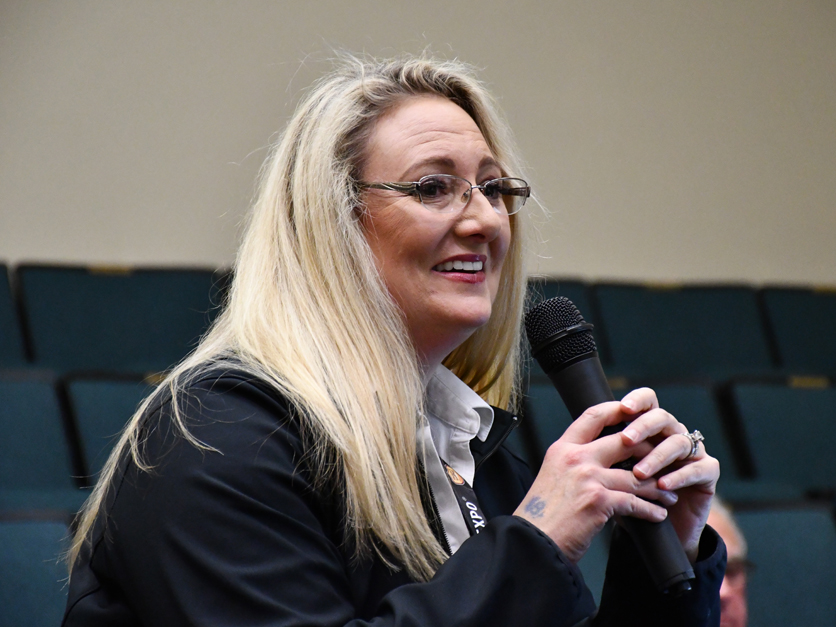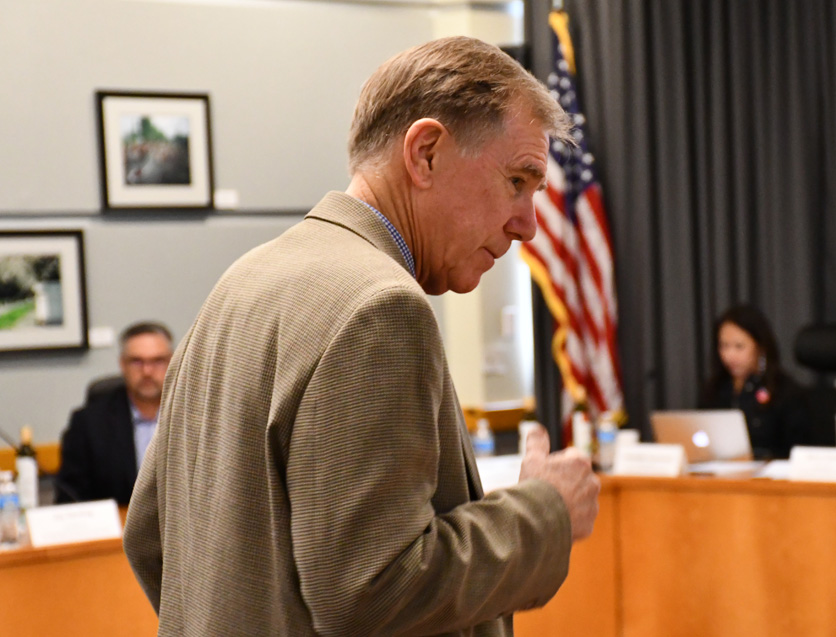Farmers are thankful for USDA and California purchasing their products for food banks. Yet switching highly specialized supply chains to an oversubscribed market is raising new challenges as well as questions about how the nation feeds the hungry during crises. Economists are also arguing the strategy is no substitute for putting money in the hands of consumers.
For the dairy industry, the sudden closing of restaurants, schools and large venues without a smooth transition to food banks or groceries led to milk dumping in early April.
“With the processors, who react to market signals with supply and demand, there was such an enigma around where the demand was and where the supply needed to go,” said Anja Raudabaugh, CEO of Western United Dairies, during a forum on Friday hosted by CalMatters.
Raudabaugh explained that processing was the biggest challenge for pivoting to donations. She credited processors with making rapid changes to adjust portions for family-sized consumption, easing the supply. This also meant milk that was bottled into small cartons for schools was now filling four-gallons jugs destined for food banks and groceries, a process only a limited number of facilities could handle.
“You're talking about shifting the weight of hundreds of dairy farms onto maybe one processor,” she said.
To build a steady stream of donations, Western United partnered with a different type of bank: Wells Fargo. It helped to deliver aged cheese products to food banks in Northern California. Raudabaugh said this could serve as a model for the public-private partnerships supporting the Farm to Family Program by the California Association of Food Banks.
Gov. Gavin Newsom announced last week a new effort to ramp up partnerships and philanthropic donations for the program, with more than $3 million in seed money from USDA funds, along with support from billionaire Kat Taylor and CoBank. Newsom hopes to raise $15 million in total, through Taylor’s engagement efforts. The goal is to deliver 21 million pounds of food each month to food banks statewide.
Steve Linkhart, who runs the association’s Farm to Family program, said the National Guard has also been helping to meet the unprecedented demand. It has filled in for “all these things that the local food banks really couldn’t go out and hire for,” such as food pickups from farms.
Newsom also allocated $20 million last month in emergency support from the state’s General Fund to go to food banks.
“That was the first time the state has ever made a General Fund allocation for food banks. But we knew that unemployment was going to cause this huge 70% increase in demand,” said CDFA Secretary Karen Ross during a town hall event by the California Food and Farming Network on Friday. “We thought it would help us go for several months. It has provided food boxes for 900,000 families, and it's already been used up.”
Ross also noted that food service industries had previously accounted for half the nation’s total food spending, signaling just how much food waste and revenue could potentially be lost during the lockdown without transitioning to new markets. With fresh produce, the Western Growers Association has estimated the loss at $1 billion.
During the event, State Senator Anna Caballero, D-Salinas, pointed out that before the pandemic, one in eight Californians and one in five children were already facing hunger, with cities in agriculturally rich regions hit hardest, including Bakersfield and Fresno.
Ross called for a better federal approach toward addressing the unique needs of local communities.

Western United Dairies CEO Anja Raudabaugh
USDA has put $3 billion in emergency spending under the Families First Coronavirus Response Act (FFCRA) toward purchasing fresh produce, dairy and meat. The agency plans to distribute those purchases through its Families to Farmers Food Box program. On Monday, USDA announced an additional $470 million in commodity purchases, including $120 million for dairy.
“My advocacy – if I have an advocacy right now – is that in the next package of relief from the federal government, we ask for state block grants to support our food banks,” said Ross. “Right now, they need money.”
Jaclyn Pack, who works in food acquisitions for the Central California Food Bank in Fresno, said money has been just one obstacle among many. She said trying to understand all the information coming out of the national program was “like trying to drink water out of Niagara Falls.”
“You're just constantly trying to figure out how to help your growers and those who are applying for this program to give them the best information they can,” she said.
Meanwhile, web traffic on the food bank’s food finder app shot up 500% as more victims of the economic fallout sought help. The sudden demand for shelf-stable items led to some canned products previously delivered in days now taking more than six weeks to arrive. Truck loads were coming in with just half the order, while other trucks, as well as cold storage, were hitting peak capacity.
In the dairy industry, California’s regulatory burdens have led to other impacts, raising questions about how the nation responds to food security in the long-term for this crisis as well as the next one.
“The consolidation of our food system does not lend itself to humanitarian need,” said Raudabaugh. “The economics become so much to overcome you cannot address your local humanitarian crisis on a community-by-community basis with any speed.”

UC Davis Prof. Daniel Sumner
Raudabaugh hopes to find ways processors can start treating food banks as regular customers, making the transition more seamless the next time.
For now, the industry will be struggling over the next eight weeks as it sees “what will certainly be some of the lowest market prices ever in the history of dairy.”
At a town hall last week with legislators and the California Farm Bureau Federation, Dan Kowalski, an economist and vice president of CoBank's Knowledge Exchange Division, said dairy demand nationwide is down about 10%.
“Some butter and cheese prices are down at or near 20-year lows,” he said. “California is a major exporter of milk powder and those prices have fallen about 26% since January.”
Raudabaugh said the federal and state funding are “not going to cover anything close” to that kind of loss.
“There is not enough money in the world right now to fix this crippling loss of our markets,” said Raudabaugh. “Putting that power back into the consumer is really where you'll start to see recovery.”
UC Davis Professor and agricultural economist Daniel Sumner has agreed with that idea. Sumner, who took part in the same meeting as Kowalski, said a better way to help both the industry and those in need is through food stamps.
“We know this recession – that's coming and is already here – is going to have substantial effects over the next several months,” he said. “We still have the income loss, and it’s really important going forward to do what we can to get the funds to buy food in the hands of vulnerable people.”
For more news, go to: www.Agri-Pulse.com


